I decided to make another drive to Racine even though I was there yesterday. A Whimbrel was reported later in the day, it would be a life bird for me. I was there at sunrise. I looked the wetland over for about 10 minutes and did not see movement but then it was getting light. All of the sudden the Whimbrel flew in and landed 100 feet from me. I was still in my car. It moved around a little while I walked down to the wetland. Moments later what I think was a Peregrine Falcon came down and tried to grab the Whimbrel. They both took off like a streak of light over the lake. I felt the Whimbrel was a goner. I found a place to sit and wait. After 45 minutes, the Whimbrel came flying in again to the same area along with the 3 Black-bellied Plovers. I never even knew those birds had left too in all the excitement. I actually felt some relief in my mind that I knew the Whimbrel survived that confrontation. I watched it feed almost continually for some time. It was taking it’s bill and sticking in the ground to its mouth and turning it. It was feeding on tiny worms species, something it eats. It was an exciting day, a life bird, well worth the trip. Images were taken on August 20, 2014.
Whimbrel
Binomial name: Numenius phaeopus
Category: Sandpipers, Phalaropes, and Allies
Size: 17.5” long, 32” wing span
Weight: 14 Oz.
Habitat: Breeding habitats can be wet or dry in tundra areas, taiga bogs, and sparse scrub lands across northern Canada and Alaska. This species winters in parts of the southern US and South America on coastal shorelines, in tidal flats, shallow marshes, short grasslands, mangroves, beaches and oyster banks.
Diet: In breeding season they prefer marine invertebrates mainly small crabs, sometimes insects and berries and even flowers. They are also known to eat butterflies. In migration their diet can include crabs, beach flies, beetles, spiders, grasshoppers and oysters.
Nesting: As the snow melts on their nesting grounds they establish territories doing aerial displays. The nest is made up of a scrape on the ground or pressed bowl typically lined with leaves, lichens and grasses. Clutch size is usually 2-5 eggs green in color marked with darker greens and browns. Both sexes incubate the eggs for about 25 days. When the downy chicks hatch, they are ready to walk. Adult birds are known to attack humans if they come too close in their nesting area.
Cool facts: Some of the migrating Whimbrels are known to do a nonstop migration flight south of 2,500 miles.



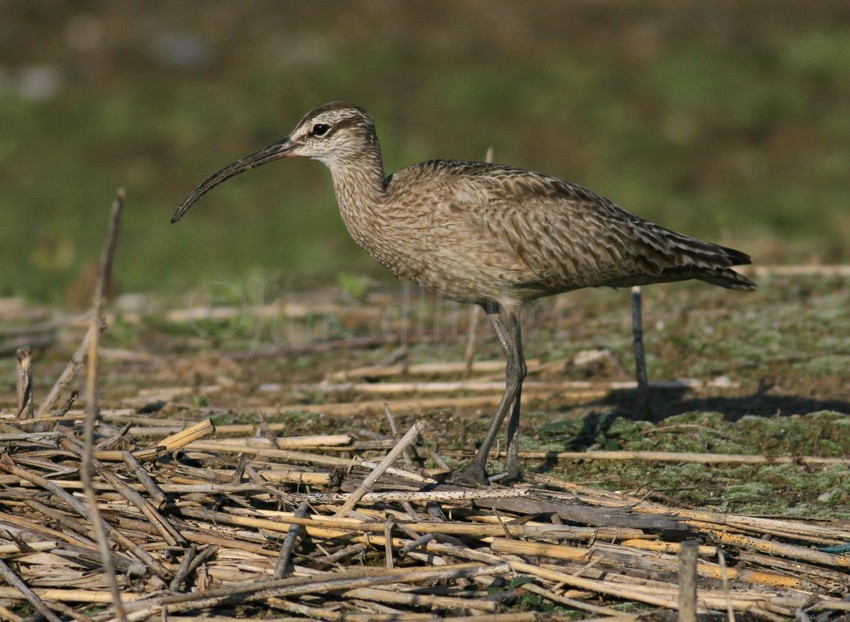

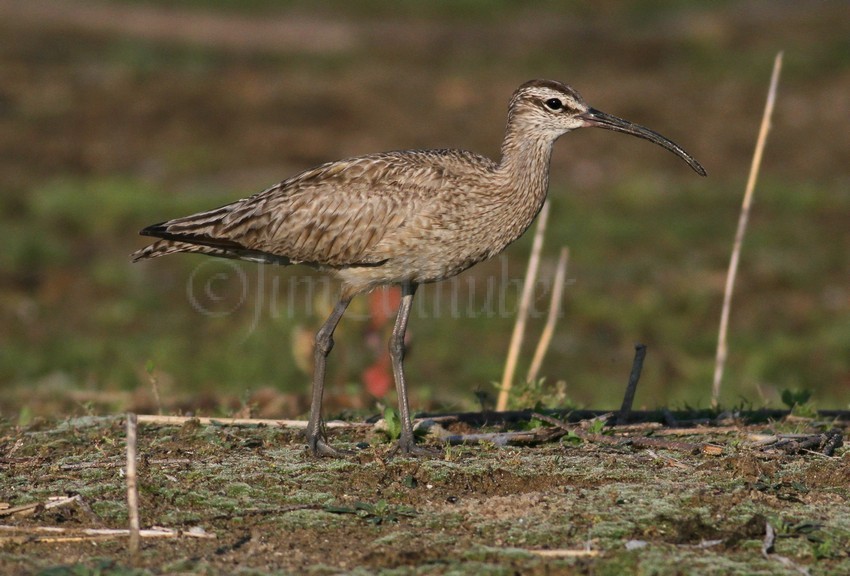
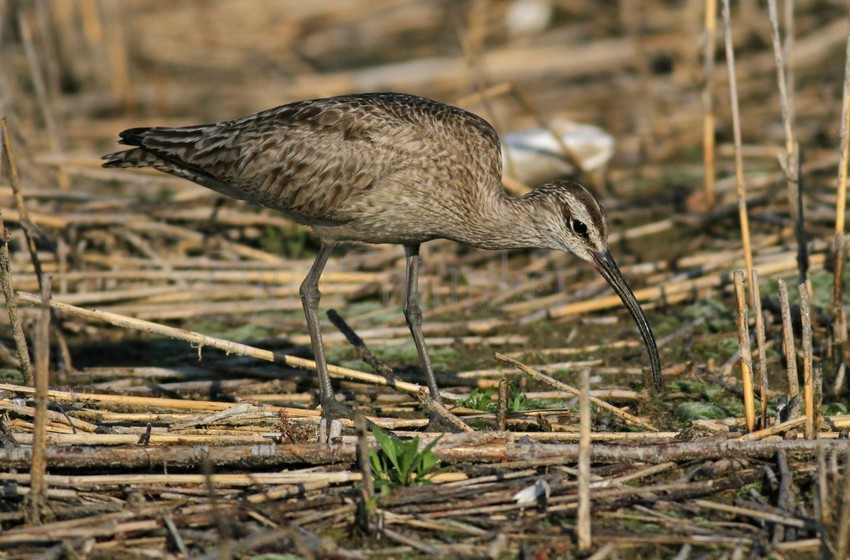


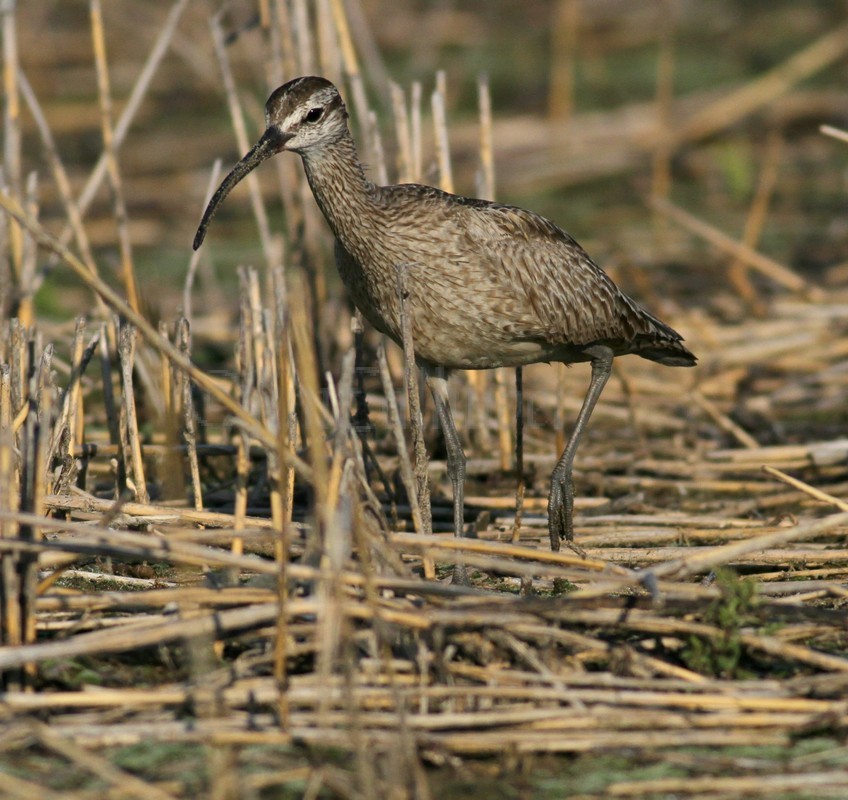


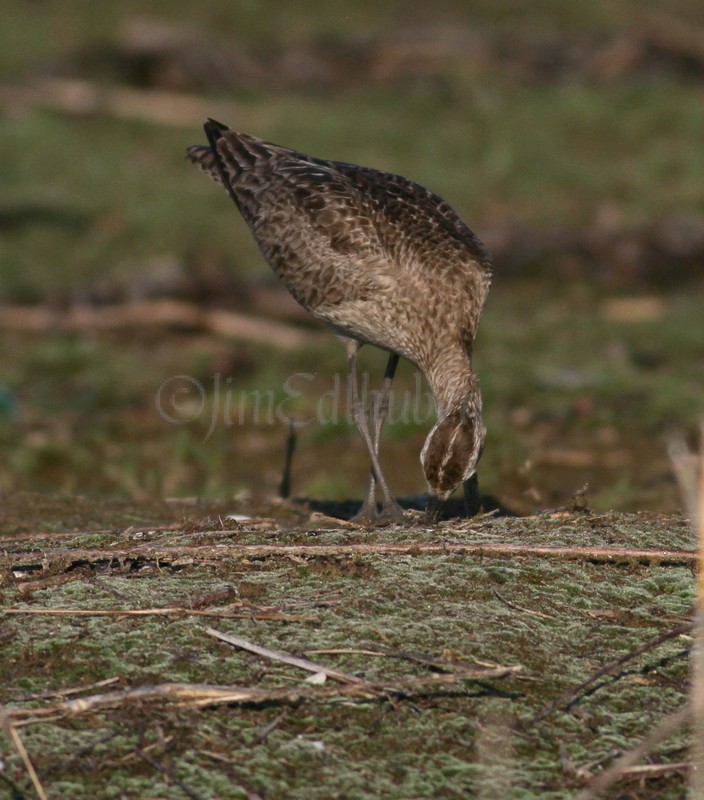

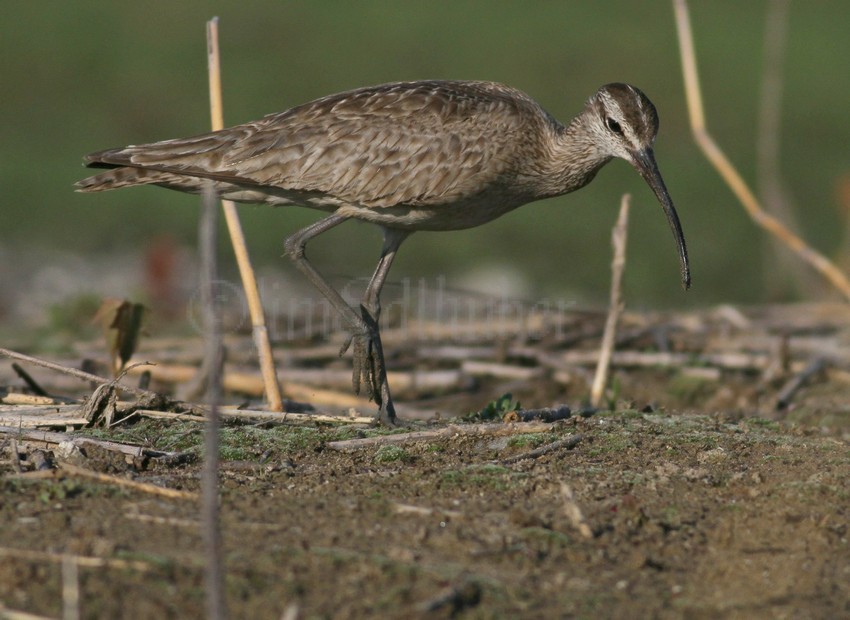
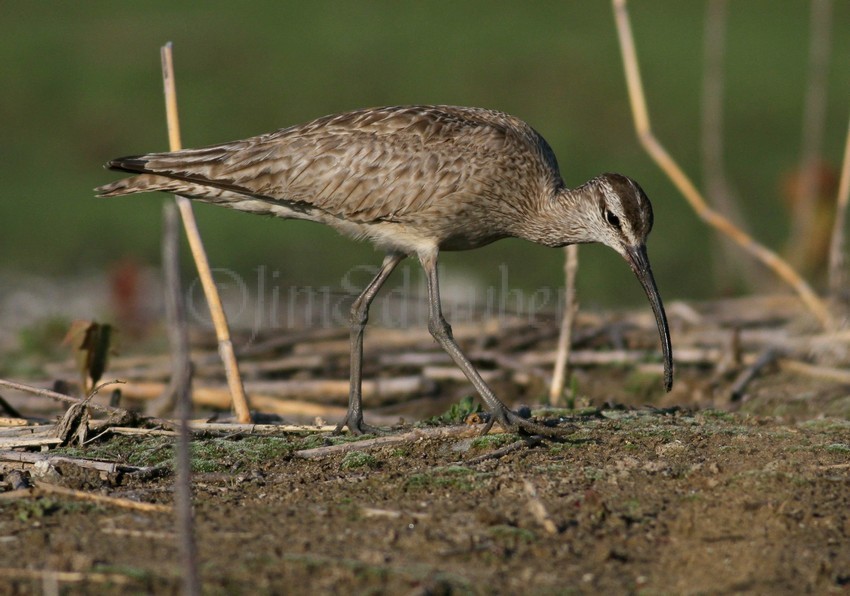
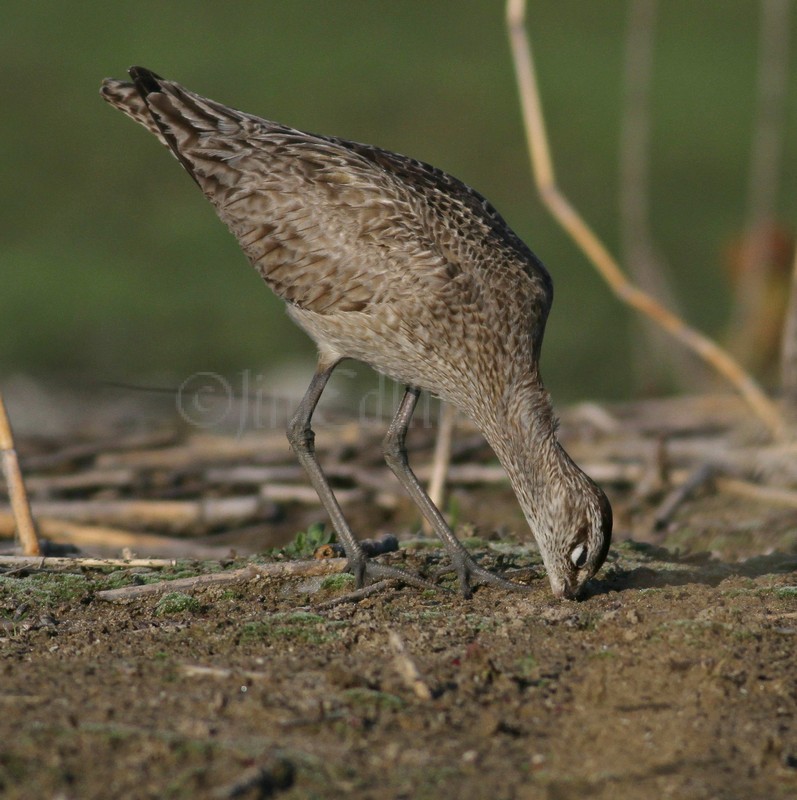






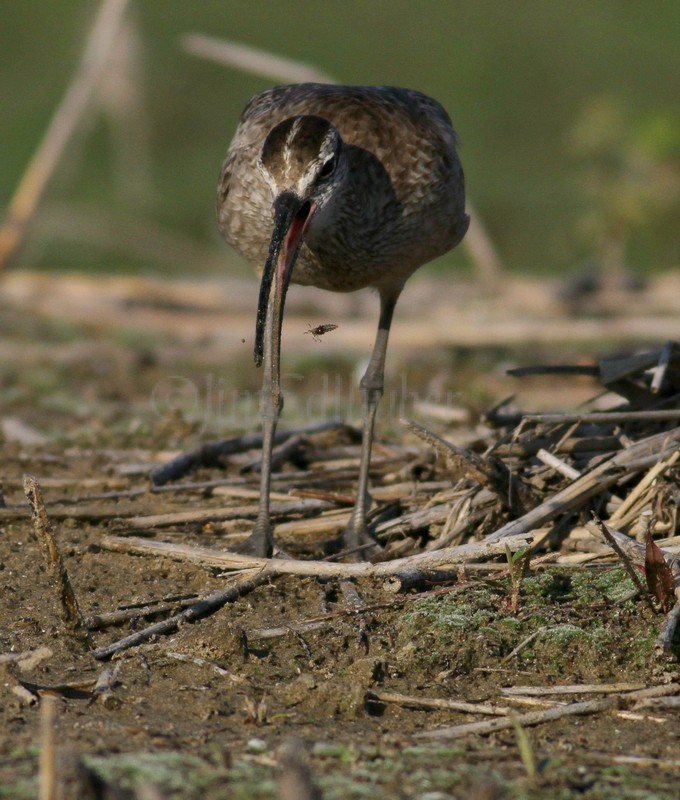

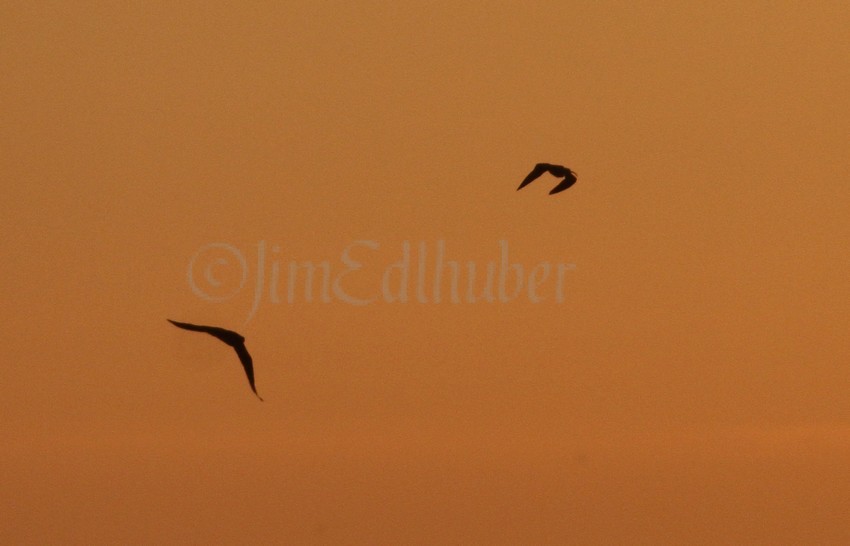


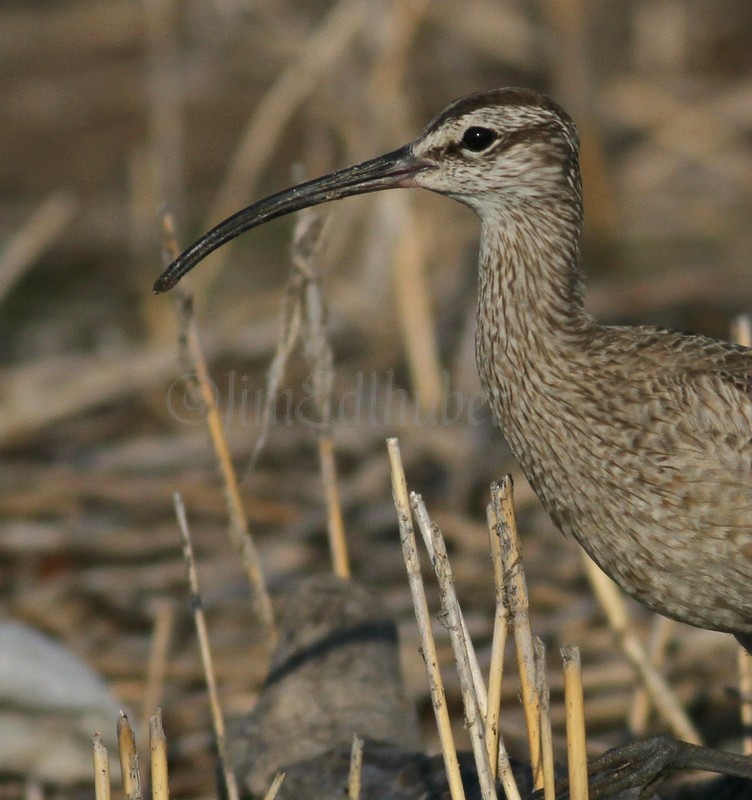



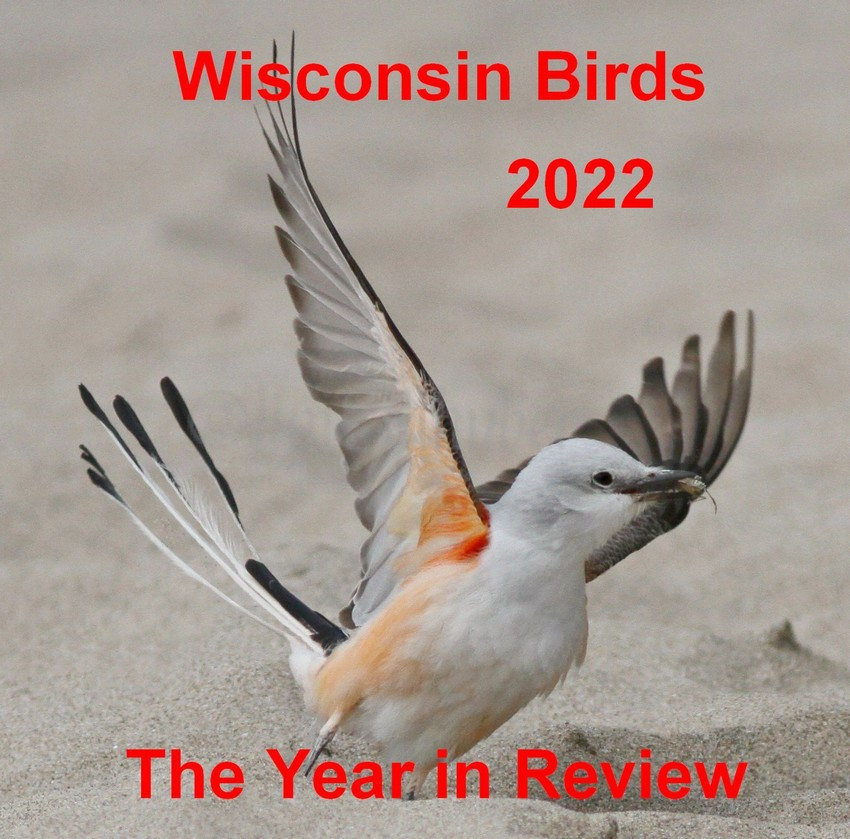
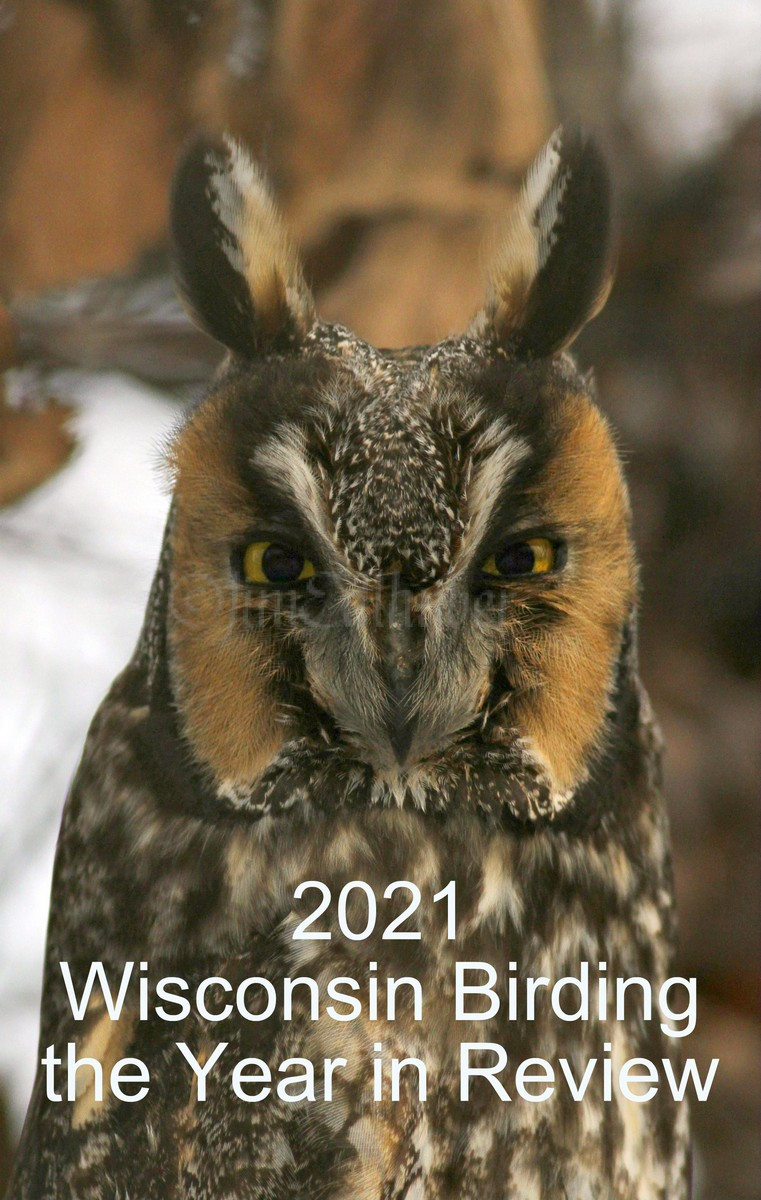


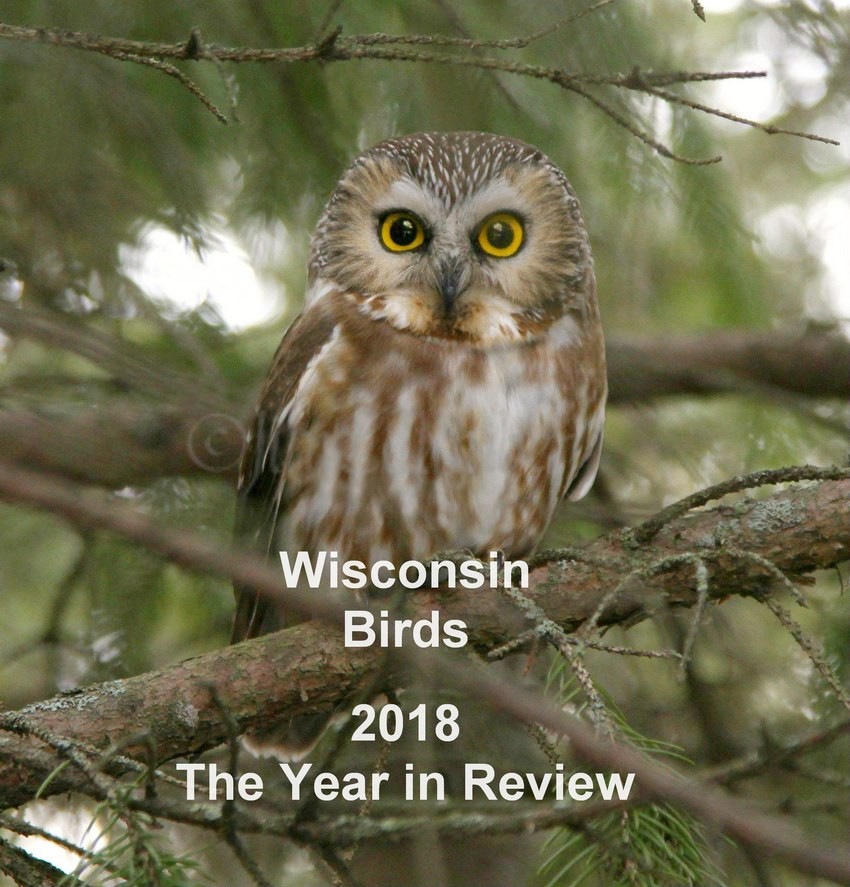
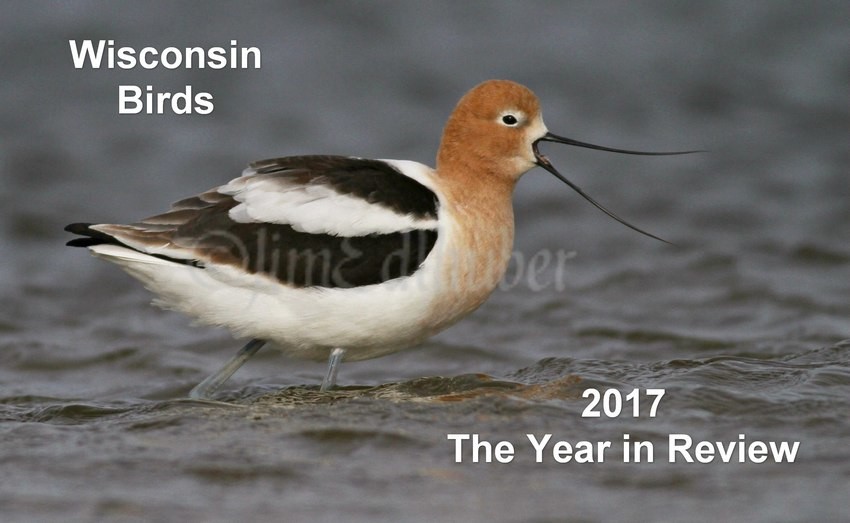
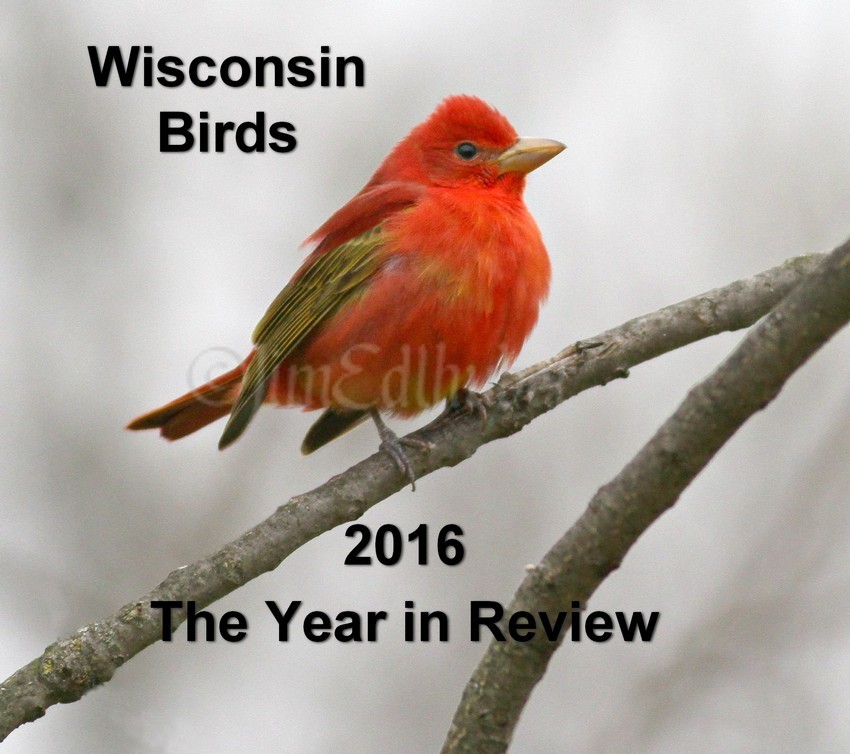
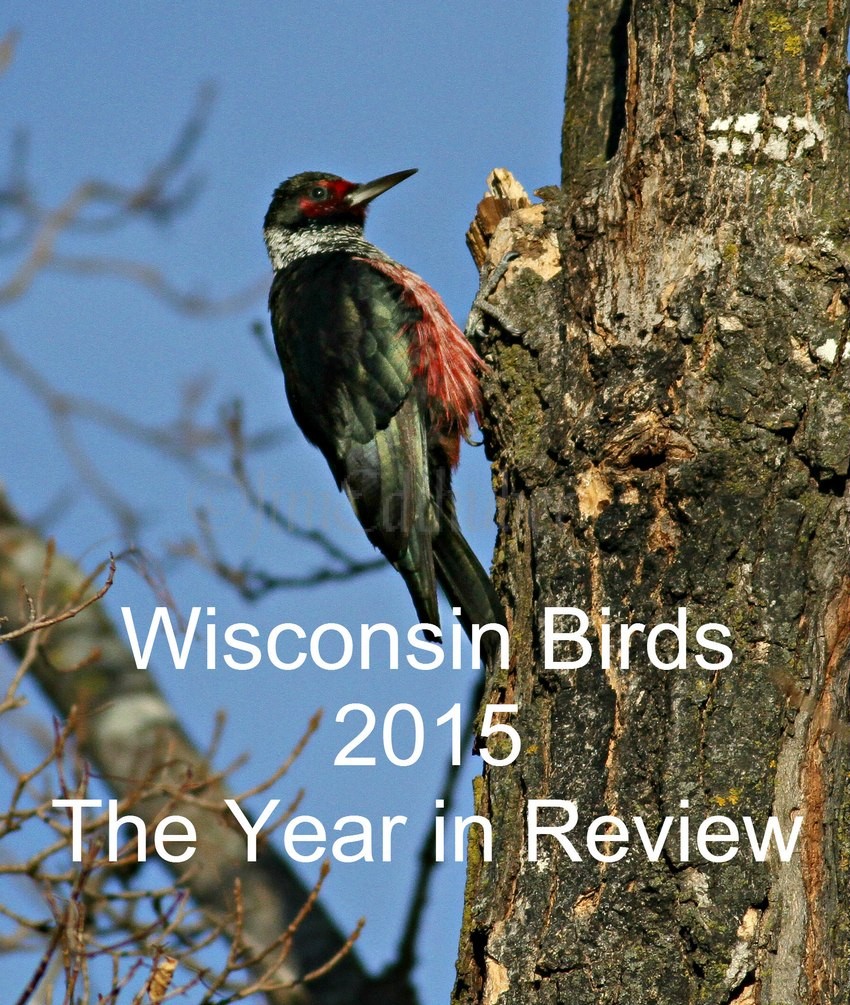


Congrats on another lifer and great pics!
Fantastic!!!
What a beautiful bird – subtle colors that blend so well w/her foraging spot. Her large feet look like the sticks surrounding her. Knees that seem to be taped to hold top leg to bottom leg. How curious that she chooses to stand w/legs crossed – maybe for better stability. The side profile captures the beauty of the feathers that swirl from the front of her head to the back. She really deserved that final portrait standing beside a tall green plant. I wasn’t sure what a Whimbrel looked like – now I know. So glad that falcon did not take her! Thanks for getting up before sunrise for these amazing photos, Jim!
Thank you so much for your amazing beautiful photos.
Great job! I learn something new from everyone of your posts. What camera, lens and settings are you using?